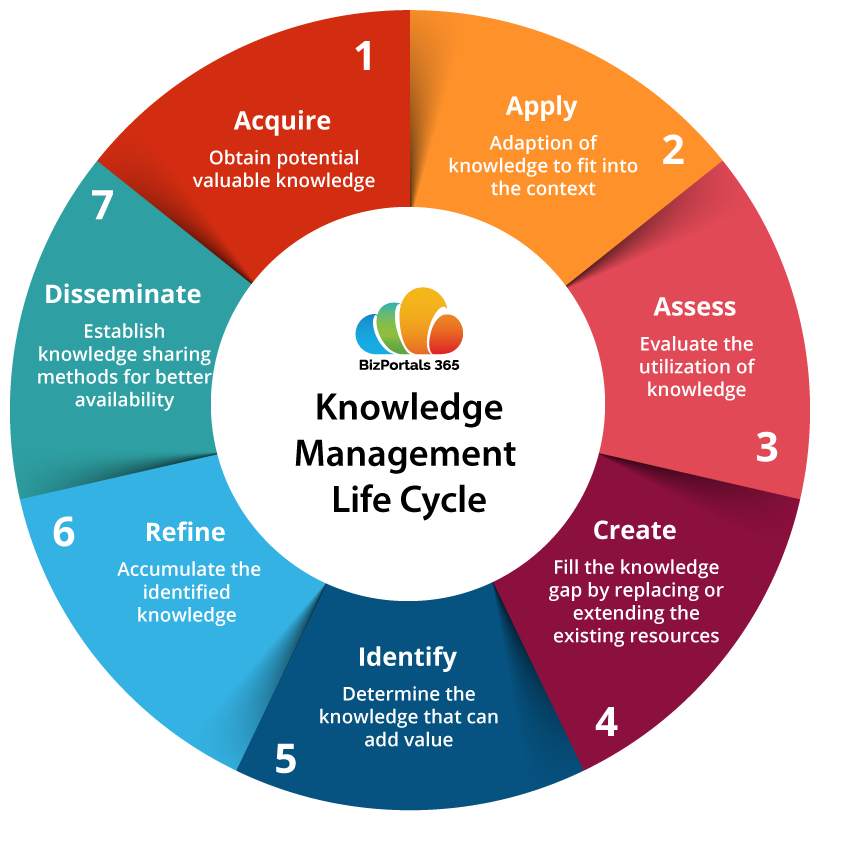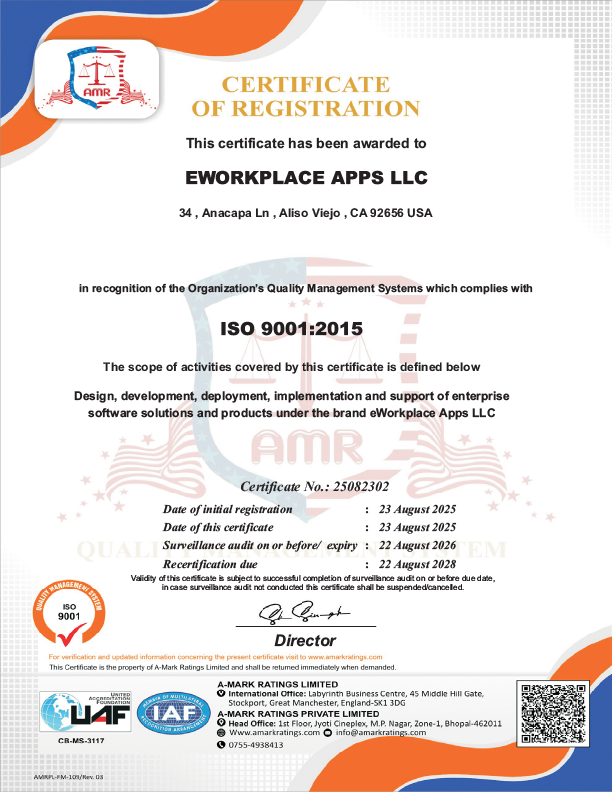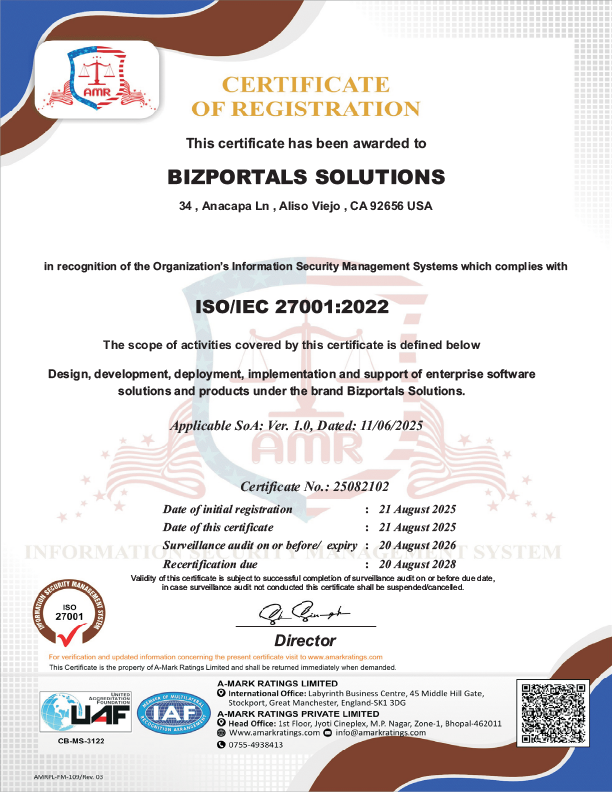There are endless number of business challenges across the world, but the solutions mostly remain localized – not learning from the experiences. So, what is the major difference between the companies that progress and fall? The answer to this complex question is rather simple – knowledge sharing within organizations, i.e., captured knowledge needs to be disseminated, scaled up and replicated.
What is knowledge sharing?
Knowledge sharing is a practice that promotes the exchange or transfer of learning from one individual to another. For organizations, it is the mutual exchange of employees’ learnings, ideas, skills, knowledge, and experience. For instance, the ‘Kaizen sessions’ popular in manufacturing industries are entirely based on the idea of knowledge sharing. Here, employees from different departments and teams come together to share ideas for continuous process improvement and enhanced operational efficiency.
Knowledge sharing in the workplace significantly impacts an organization’s intellectual assets. It boosts employees’ productivity, improves decision-making, and strengthens the organization’s culture.
Incorporating a knowledge sharing culture is mandatory for organizations to succeed because there is always a risk of losing or forgetting the acquired knowledge. The conduit of knowledge sharing needs to be shared rather than just storing or documenting it because when your staff struggles to access information employees need and can’t find it on time, the bottom line of your company suffers.
Now when you know the importance of knowledge sharing, now is the time to make it happen. Watch this video to learn 10 knowledge management best practices to bring you success.
How to shrink the knowledge gap using knowledge sharing?
In simple terms, organizational knowledge sharing is an uninterrupted flow of information to all stakeholders within the organization necessary to improve operational excellence and consistency. Despite this, the exact levels of operational efficiency can be determined by the knowledge gap, i.e., what employees currently know and what they need to know and do in order to perform their roles better. The absence of an adequate knowledge-sharing platform that restricts capturing, storing, organizing, and sharing information widens this gap.
Whether it is verbal or digital, sharing leads to a better knowledge base of employees and fosters a culture of knowledge management. Hence, it is crucial to boost such a culture that facilitates employees to use digital platforms for sharing best knowledge and practices.
The ultimate key is developing a knowledge-sharing platform where employees feel comfortable putting up their opinions, ideas, and personal viewpoints and seek assistance from peers/seniors/experts when needed. Discover the top 10 best practices and tools to ensure knowledge-sharing benefits in an organization.
10 Best practices and tools to ensure knowledge sharing benefits in an organization.
Knowledge Sharing Best Practices
Considering the huge benefits of sharing knowledge in the workplace, it is no secret that it is one of the best ways to improve the productivity and performance of an organization. Sharing best practices helps in filling the knowledge gaps and improving efficiency at the workplace.
The question here is, how to improve knowledge sharing in the organization? Here are some of the most effective practices to encourage knowledge sharing.
1. Establish knowledge sharing habits
The key to effective knowledge sharing practices is not just to educate about sharing practices but help them understand the potential benefits from their fellow worker’s experience. The knowledge sharing methods helps in automating and standardizing the knowledge management, but the most prominent challenge is to create a knowledge sharing culture. A knowledge lifecycle helps in building the processes and stimulate knowledge transfer within the organization. Let’s understand the lifecycle of knowledge first.
The lifecycle of knowledge is mainly concerned with the organization of data and outlines the building, storing, pooling, and extending the knowledge. Here, the role of technology becomes very important to support this learning community. Employing technology helps you streamline internal communication, discussions, knowledge dissemination, and much more.
2. Go cloud to share best practices
Accessibility is the key to the best knowledge management. And by keeping the resources on the cloud can help you make the knowledge easily accessible across the organization. Some of the key features of your content management system includes:
- Online or cloud access that allows you to access the resources anytime, anywhere.
- Intuitive user experience that tunes with the employees and does not require intensive training
- Defined authoring process and direct link sharing
- Mobile-friendly
- Manage multiple roles and permissions for content access within the organization
- Integrate seamlessly with social and collaboration tools.
3. Incentivize the knowledge sharing activities
Now, who does not love rewards? There are many different ways to reward your team members who embody the knowledge sharing practices. To start with, a social media post on the company page, an appreciation email, or an announcement can be done for the team member. Their valuable contribution needs to be valued as it benefits the fellow-workers as well as the organization.
Specify the content that has been shared by the team member with some tangible benefits that encourages everyone to make their part of the contribution. You can also consider giving a bonus to the employee who share the most important information in the quarter or year.
4. Enhance onboarding and training practices
The new hires onboarding and training seem to be unrelated here at first glance. However, knowledge sharing platform is one of the most useful resources for new hires. Often, they spend a lot of time to contribute their ideas and feel nervous to express in the group setting. As a result, they lose their interactive skills and knowledge over time.
The contribution and collaboration of new hires are as important as existing employees. And knowledge management can fulfill this purpose. For example, a mentor can be allocated for each hire so that they feel empowered to speak up in the group. Never assume that they don’t want to contribute but always encourage them to provide their opinion.
5. Use state-of-the-art knowledge sharing tool
The selection of a knowledge sharing platform is one of the major business decisions as it directly impacts the productivity of employees and business performance. The utilization effective knowledge sharing tools allow you to streamline the business processes, search for content quickly, store documents and media content easily, locate experts, ask questions, and much more. The right selection of a knowledge sharing platform can maximize the impact of valuable contributions made by every employee in the organization.
Top Knowledge Sharing Tools
Implementing knowledge sharing best practices is the first step, because that’s how you create a knowledge sharing culture in an organization. Still, they are of no use until you have an interactive, easy-to-use, and reliable knowledge sharing tool to encourage such practices among the employees. Here are some essential knowledge sharing tools in your SharePoint environment to efficiently organize and share knowledge and boost up your intellectual assets.
1. Blogs, suggestion box, and feedback
Imagine a dedicated space where employees can share their expertise, opinions, and ideas accessible to all the stakeholders. Having SharePoint by your side, you can create robust channels to leverage collective intelligence. Certainly, running an internal company blog, creating a virtual suggestion box can push your knowledge-sharing efforts.
You can leverage Blogs, the most engaging way to share insights on processes, company announcements, projects, achievements, and more to keep your employees updated with the latest developments. Also, you can create a virtual suggestion box or a dedicated widget where employees can share suggestions or feedback on processes, workflows, or any other aspects of the company’s operations, contributing to process improvement.
2. ‘Ask an expert’ and FAQ
FAQs form the core of your organizational knowledge sharing strategy. For instance, onboarding can be a time-consuming process for newly hired employees, but having a well-structured FAQ section covering the entire onboarding process can be a valuable time-saving resource. Certainly, FAQs help you reduce the response time and bring consistency by answering questions your employees commonly ask. Also, involving experts with different specializations and allowing them to answer questions can align your employees with the process and reduce the knowledge gap within the organization.
3. Internal communication platform
Internal communication platform acts as a prime facilitator for knowledge sharing, specifically in this remote and distributed work environment. It helps the organization keep employees informed, engaged, and involved, eventually creating a robust knowledge sharing culture.
SharePoint-based intranets also serve as a platform to convey company’s goals, values, achievements, and even recent happenings to the employees for better information flow. Furthermore, SharePoint’s ability to integrate with applications like Teams, Yammer, and Outlook allows you to conduct 1:1 chat, group chat, calls, meetings, or share screen at any time, from any device.
4. Document management
Never let your essential files go missing in email threads, old task management software, or communication channels. The integrated Microsoft 365 platform provides searchable phrases and tags and a centralized repository to manage documents efficiently. You can easily create, organize, and access documents as well as other interactive media formats in one place. Furthermore, SharePoint offering version control allows users to track changes, eventually promoting accuracy in information sharing.
5. Dedicated knowledge center
How long does it take for an employee to be fully productive? A report published by Training Industry suggests that an employee needs a minimum of a year to understand the job clearly. However, these facts differ in organizations with a knowledge sharing culture. Transferring knowledge, information, strategies, and vital tactics from experts to the new hires is easy in a collaborative workspace. The SharePoint-based platform delivers a dedicated space to keep your knowledge articles, key documents, and reports all in one place. You can also manage your intellectual assets by adding quick links, categories, and metadata to the files making them easily accessible at the time of need.
Why is knowledge sharing important in the workplace?
Gone are those days when a herd mentality drove the industrial workforce. Things are rather different in the present scenario. Now, modern workers demand more insight into the technology running behind the curtains. Indeed, understanding the process in itself makes way for innovation and productivity.
A collaborative workplace is of utmost importance where the new hires can feel an appetite for learning new things and learned employees can share their expertise. Knowledge sharing techniques align the organizational goals with employee learning. It maximizes learning through employee engagement, promoting and sharing their ideas, and retaining their skills and tactics. It helps organizations recognize potential growth opportunities, avoid redundancies, and save time.
1. Reuse the best problem-solving experiences
Reusing what others have already learned and created can save a lot of time and money, increase work productivity, and minimize risks. Sharing best practices helps in streamlining the work and increasing the productivity of employees. Some knowledge sharing examples include user manuals, training documents, used methodologies, best-proven practices, storytelling, lessons learned, e-learning.
2. Boosts competence and efficiency
Did you know that your employees could take a substantial amount of time to look for the right information or locate the relevant search result? It means that a lot of productive time is spent unproductively to seek information.
The knowledge management practices in an organization shrink most of the unproductive time spent in searching for the information. And at the same time, all the employees will have easy access to the right information, whenever and wherever they need it.
3. Stimulate workplace innovation
Sharing the best knowledge management practices encourage your employees to share their innovative ideas and help deliver better results. The stimulation of knowledge and increased idea sharing helps the employees to be more productive and on the cusp of new trends and markets.
4. Faster and better decision making
Sharing best practices across teams is not only beneficial to your employees but also fruitful for business performance. When all the tasks are performed efficiently in the organization and every member works in a streamlined manner, it ensures faster, better decision making and eventually improves the productivity and performance of the organization.
5. Improve sales and customer relationships
The importance of customer cannot be overstated as it is ranked before finance and product to achieve business success. Knowledge management plays a crucial role in managing customer relations. For example, when a customer service agent spends a lot of time to search for the relevant information to resolve a problem or answer a question, customers will end up being frustrated and ultimately dissatisfied. With a knowledge-sharing platform, the search effort and time can be reduced drastically. It provides access to consolidated information, making it easier to use.
6. Reduce know-how losses
Know-how is a very important asset for the organization and its management directly impacts the business performance. The knowledge sharing practices can capture best of the knowledge and make it accessible to employees.
It makes scarce resources readily available across the organization. Earlier, the presentations, trainings, white papers and case studies fulfilled these needs but now, central streamline internal communication are the necessity to make information accessible.
7. Build a corporate community
Sharing knowledge is one of the best intuitive ways to form a closely-knit community. A dedicated platform for information sharing and management helps businesses to capture and store knowledge in the most accessible ways. Building a community also ensures the consistency of knowledge sharing within the organization.
8. Reduce cost and time
Knowledge sharing best practices allows employees to share important information they have along with their achievements and experience. It eliminates the redundant effort of employees and saves them from committing the same mistakes. Moreover, they can get the ready solution at the right time. In addition to saving time, it also reduces the cost that your business may incur to solve the problems.
Potential barriers to knowledge sharing
“Often, we are too slow to recognize how much and in what ways we can assist each other through sharing such expertise and knowledge.” -Owen Arthur.
The above quote fits well with modern businesses struggling to tap their intellectual capital.
Not all organizations are successful in implementing their knowledge sharing techniques. So, what barriers restrict them from achieving the desired results?
Knowledge sharing is a mutual practice crucial to maintaining a well-trained workforce. However, this process involves key stakeholders like the employees, the organization itself, and the technology. Equal engagement of all the stakeholders becomes essential to ensure the free flow of information.
1. Organizational Barriers
Undoubtedly, an organization’s work culture significantly impacts its knowledge sharing strategies. Specific issues like communication barriers and lack of digital workspace are critical to addressing. What can organizations do? Communicate with your employees, ask them to participate freely, share their ideas, and provide adequate resources to encourage sharing practices. A highly collaborative workspace and fair employee engagement practices are needed to ensure efficient knowledge sharing.
2. Technological Barriers
Providing employees with a knowledge sharing system and technology-enabled platform to share their expertise is always a good option. Turnkey SharePoint intranet solution fits well for this requirement. Providing employees with a single interface to communicate with their coworkers can revamp your strategy. Present them with dedicated learning centers, subject experts, and tools like Teams and Outlook for better information sharing. Not all available information is knowledge. BizPortals 365 integrated with tools like Power BI presents visually interactive data making it easier for employees to learn and share.
3. Individual Barriers
Employees are an organization’s fundamental unit and contribute the most to the knowledge sharing system. However, organizations lacking knowledge sharing ideas and awareness to use new tools prevent employees from communicating with their coworkers. Promoting a collaborative and digital environment assists them in learning freely from their coworkers and growing professionally as a team.
Why adopt a modern digital workplace to encourage knowledge sharing?
Lesser employee engagement is a notable concern that remains common to all the barriers impacting effective knowledge sharing. However, modern digital workplace solutions represent a collaborative ecosystem where employees stay at the center stage. Organizations implementing a profound platform that allows faster, easier, and more secure workplace communication are more likely to evolve a learning culture.
Developing a knowledge sharing platform and building a knowledge sharing culture looks different at initial stages. Implementing these best practices and tools can act as a launchpad for your organization. And soon, your organization will start maximizing the benefits from the knowledge sharing and valuable contributions of the team members. Finally, the selection of the right knowledge sharing platform is the first step towards creating a knowledge culture in the organization.
The right knowledge sharing platform allows you to access the information anytime and anywhere, quickly search relevant information, ask questions, chat with team members, store the content securely, streamline onboarding, training, and other HR processes, encourage everyone to contribute ideas and create synergy.
Is your information also scattered across disparate systems like most of the organizations? If you don’t want any further worries of content management and knowledge sharing, using BizPortals 365 can help by unifying the relevant results in one place, providing easy access to information to employees, and sharing best practices Schedule a DEMO to see it in action.
FAQs
What is a knowledge sharing tool?
Reinventing the wheel every time is not a solution, specifically if an organization focuses on progressive strategies. Yes, employees spend much time searching for essential documents from scratch every time in a cluttered workspace. However, knowledge sharing tools enable you to organize, store, and share information effectively. It becomes even more flawless when you have an intranet integrated with Microsoft 365 features that support employee engagement features for unhindered workplace communication.
What are knowledge sharing strategies?
A knowledge sharing strategy is a course of action devised to attain a specific goal of knowledge sharing. Implementing a new reform directly impacts a company’s culture, which proves the same with knowledge sharing strategies. A well-planned knowledge sharing strategy should focus on meeting the organization’s goals, improving employee coordination, and expanding its intellectual capital. It must encourage employees to use knowledge sharing practices to contribute to the self-learning resource pool of an organization.
What type of tools can support knowledge sharing?
Knowledge sharing is best supported by a digital solution like an intranet that supports excellent coordination within the organization. The add-on benefits offered by a SharePoint-based intranet to promote knowledge-sharing practices are:
- A centralized storage and well-managed content repository.
- A robust communication system for information sharing and supports individual as well as group chats, meetings, and calls.
- Multiple advanced search filters to reduce time spent on searching information.
- A dedicated knowledge base to store informative videos, documents, cases, and FAQs to assist the self-learning of employees.






